Tips for Growing and Caring for Mango Trees
The Edison and Ford Winter Estates is dotted with so many mango trees, that Henry Ford named his estate “The Mangoes.” In the rainforests, they’ve been known to grow up to 120 feet high. Not only do they provide excellent shade but some of the tastiest and most popular fruit in the world.
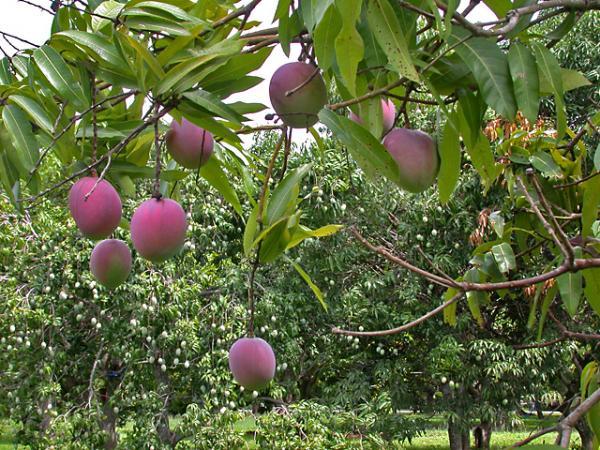
Mangoes are evergreen trees that are drought tolerant and love sunshine. Here are some great tips for growing and caring for Mango Trees:
- Are accustomed to hot and dry climates so plant in full sun and do not over water. A good rule is to water a newly planted tree every three days for the first month, once a week for the next two months, and only during extended dry spells after that.
- Be careful of over watering while fruit is developing as this can cause the fruit to burst.
- Tropical plant that can become temporarily dormant at temperatures of 40 degrees or below and will be damaged or die at 32 degrees or below. Be sure to cover during frost with coverings staked to the ground as this allows the heat from the ground to keep the tree warm.
- Pruning is not recommended for amateurs and should only be done with sterilized blades.
- Mango seeds do not produce the same quality fruit as the tree they originate from. If you eat a particularly flavorful mango, its seed will not produce the same delicious fruit. For this reason, many mango trees are grafted.
IMPORTANT NOTE: Mango leaves are poisonous. They should be kept away from animals that might nibble on them and should never be burned.
Please visit our Garden Shoppe at the Edison and Ford Winter Estates to see our great selection of fruit and spice trees. Learn more about our gardens or submit questions to our staff on our web site at: https://www.edisonfordwinterestates.org/about/whats-blooming/.
Related Posts: Mango Salsa Recipe, Mango Smoothie Recipe, Are All Mangoes Created Equal? Delicious Mango Varieties, Tropical Fruit Trees That Grow Best in Southwest Florida
Tropical Fruit Trees That Grow Best in SW Florida
The Edison Ford Winter Estates is the perfect starting place to learn about some of the many varieties of tropical fruit trees that will grow well in your SW Florida garden. Our Garden Shoppe has a great selection of treesfor you to enjoy.
- Mango– The Mango is probably the most enjoyed fruit worldwide. It has been planted in Florida for over 100 years, is a small to medium tree about 15 feet tall and produces fruit for a summer harvest. Valencia Pride is one of the more popular commercial varieties and a grafted tree will produce fruit in 3 to 5 years. Mangoes are high in vitamins A and C. For growing tips & care, click here.

- Mango Tree
- Avocado – Avocado trees are a great selection for Florida gardens. They are a medium sized tree around 20 feet tall and come in an early, mid and late season variety. Plant all three and you can get fruit nearly all year long. Plant in well drained soil, as they don’t like wet feet. For planting & growing tips, click here.
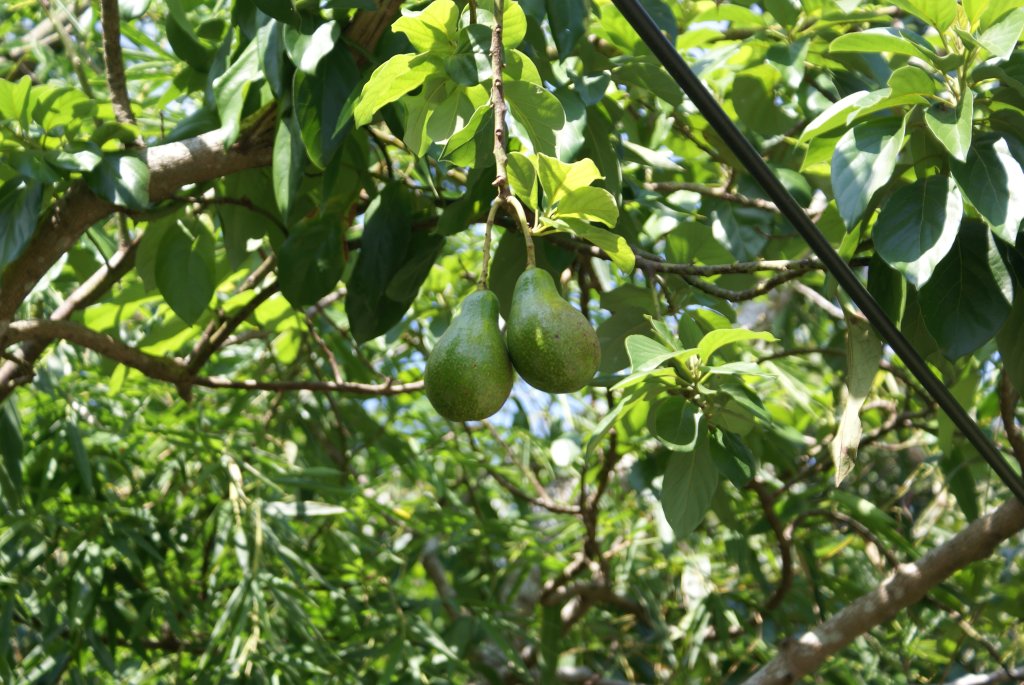
- Avocado Tree
- Lychee – The Lychee is a native of China and Asia, but thrives in our SW Florida climate. Pine Island is a very large commercial producer with fruit arriving in late May through early July. A larger tree growing upwards of 40 feet tall, producing fruit after about 3 to 5 years and preferring well drained soil with some wind protection. For planting & growing tips, click here.
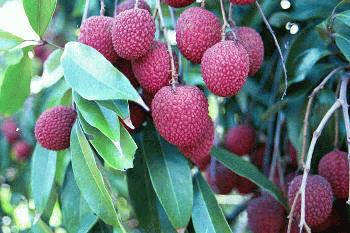
- Lychee Tree
- Carambola – Also known as Star Fruit, this tropical fruit is a great ornamental tree for your yard. They produce a large amount of fruit from July to September and again in November to February. They prefer well drained soil, a sunny location and some protection from the wind. They have a sweet, citrus-like flavor that is delicious in salads or a garnish in drinks. For planting & growing tips, click here.
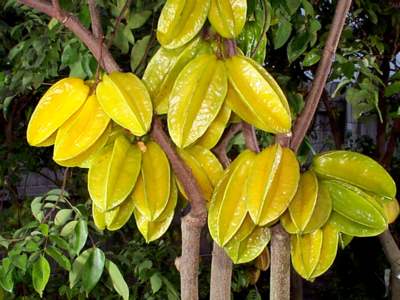
- Carambola or Star Fruit Tree
- Papaya – These fruit trees are great for a smaller space in the garden, growing very upright and producing fruit in about a year from seed. Red Lady is a dwarf, self pollinating variety that is an excellent choice for the average home gardener. Papayas produce fruit all year long and have an excellent flavor. For planting & growing tips, click here.
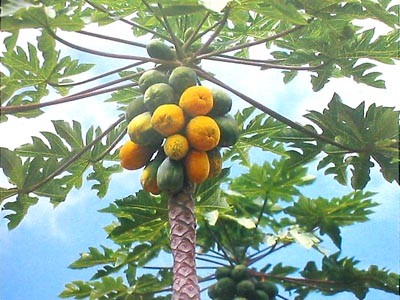
- Papaya Tree
While this is just a short list of the most common varieties, one thing holds true for SW Florida gardens: Our climate is perfect for growing!
Please visit our Garden Shoppe at the Edison and Ford Winter Estates to see our great selection of fruit and spice trees. Learn more about our gardens or submit questions to our staff on our web site at: https://www.edisonfordwinterestates.org/about/whats-blooming/.
How to Grow a New Pineapple from a Store Bought Pineapple
Next time you buy a Pineapple, plant the top and grow a new one for FREE!
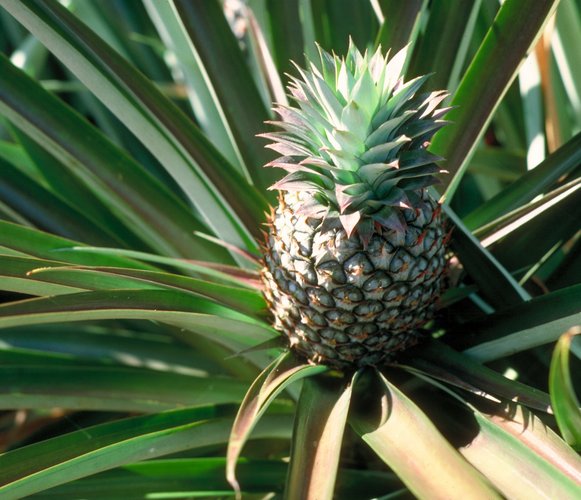
Every time you purchase a pineapple and throw away the top you are passing up on an opportunity to grow a new one!
The next time you buy a pineapple, follow these steps to grow your own:
- Cut off the top so there is 1 to 2 inches of fruit left
- Remove the excess fruit to expose the bottom of the leaves
- Peel away one or two layers of the bottom leaves
- Plant this at a depth where the leaves turn darker in a moist potting mix
- Choose a shady location and keep watered (not soggy) until it forms roots (move to full sun after rooted)
- You can fertilize, but do it lightly and not very often.
- In about 12 to 14 months you should start to see the fruit forming and in about 18 to 24 months you’ll have yourself a fresh pineapple!
Tips for planting and caring for your pineapple plant:
- Water about once a week directly onto soil. The plant is tropical and pretty drought tolerant so little or no watering is needed in the summer rainy season.
- Pineapples can be grown in a pot or container or directly in the ground.
- Pineapples are tropical, so protect them from freezing and frost.
- Once the plant has taken root, move it to a location in full sun.
- Harvest fruit when it changes from green to gold in color. This allows the fruit to become much sweeter.
- Plants will produce slips and shoots (baby pineapple plants) and you will be able to start these just like you started your original plant.
Edible Pineapple plants and Ornamental Pineapple plants are available for purchase in the Edison & Ford Estates Garden Shoppe. Stop in to see what else we have in stock right now!
Need a drought tolerant plant for your Florida garden? Try a Bulbine
Bulbine (Bulbine frutescens, Burn Jelly Plant).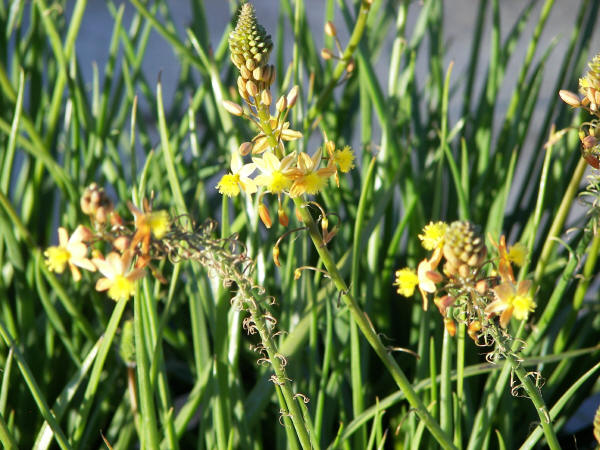
We have a great new plant available at the gardens and it is a relative newcomer to the gardening industry in the last few years. It is the perfect choice for the homeowner who wants a very low maintenance and drought tolerant option.
The leaves of the Bulbine produce a jelly-like juice (similar to Aloe) that is wonderful natural treatment for burns, rashes, insect bites, cracked lips and cold sores.
The Bulbine makes a great ground cover since each plant will grow to form a clump that can reach up to four feet wide. This clumping habit also makes Bulbine a great pass along plant. The succulent, grass-like foliage grows to about 12 to 18 inches tall with flower spikes reaching two feet.
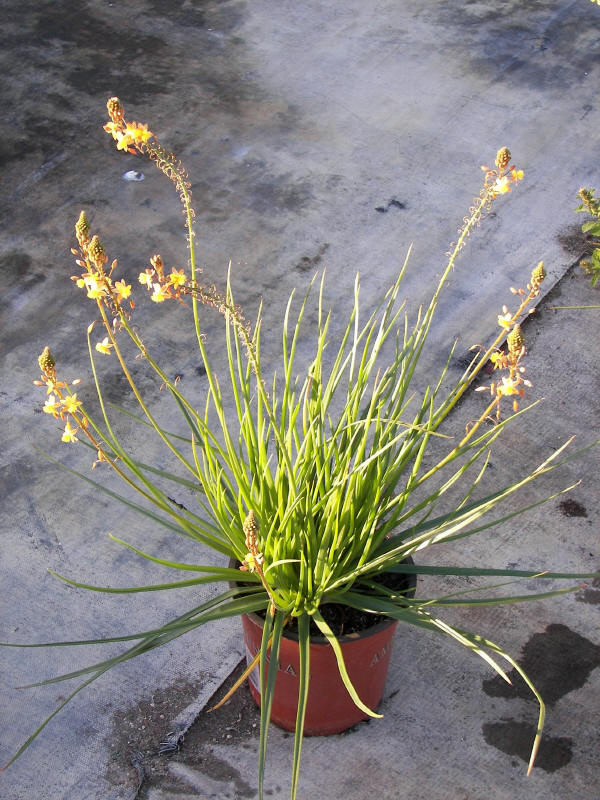
Caring for your Bulbine frutescens:
- Watering your Bulbine is not needed in the rainy season, but supplemental watering every two weeks may be needed in the dry season.
- Suited for growing in Zones 9-11 and is hardy to the low 20’s.
- Grows best in well drained soil, but is very tolerant of poor dry soil.
- Needs little attention or special treatment.
- Drought tolerant.
- Can be used in a container garden.
- Plant your new Bulbine in a sunny location with 6 to 8+ hours of sun.
A group planting of Bulbine will make a striking and low cost addition to your SW Florida garden. The Edison and Ford Winter Estates currently has Bulbine available for purchase in one gallon containers in our Garden Shoppe.